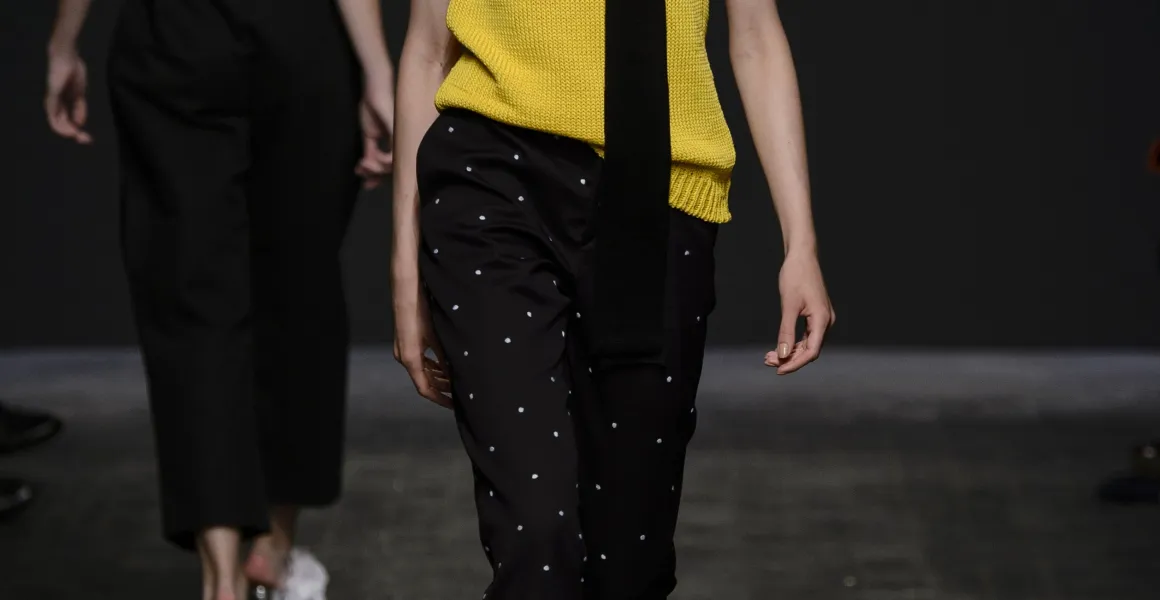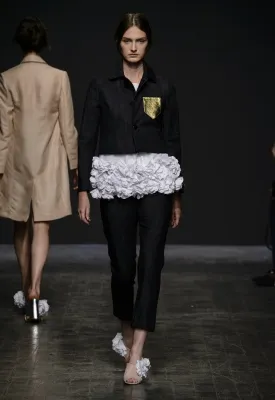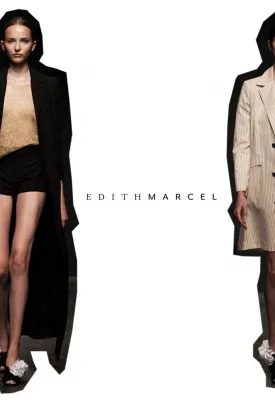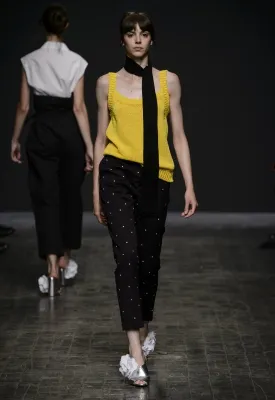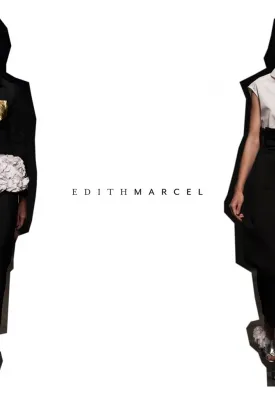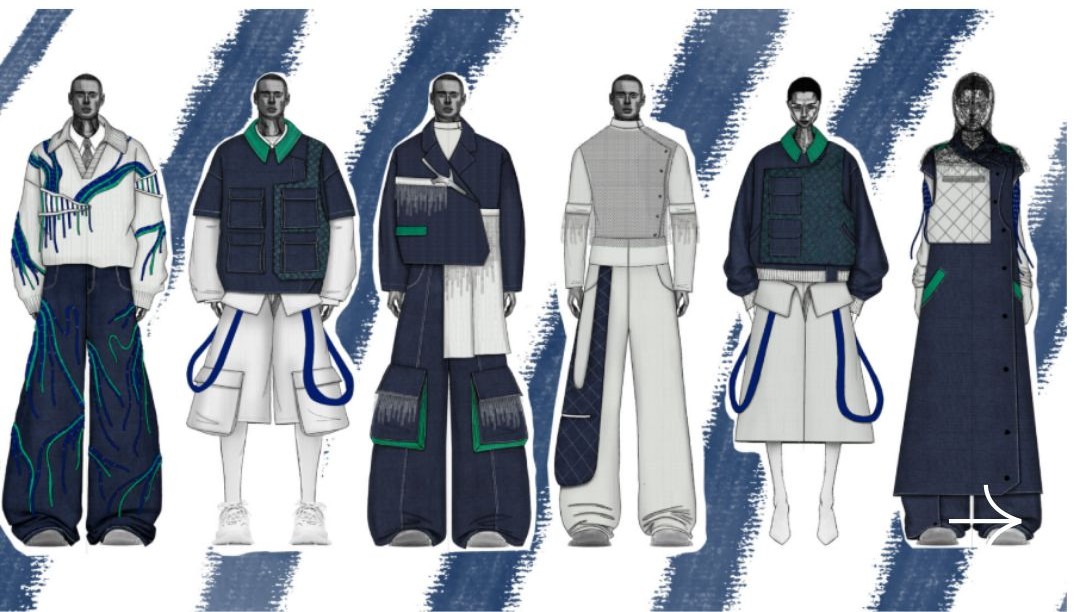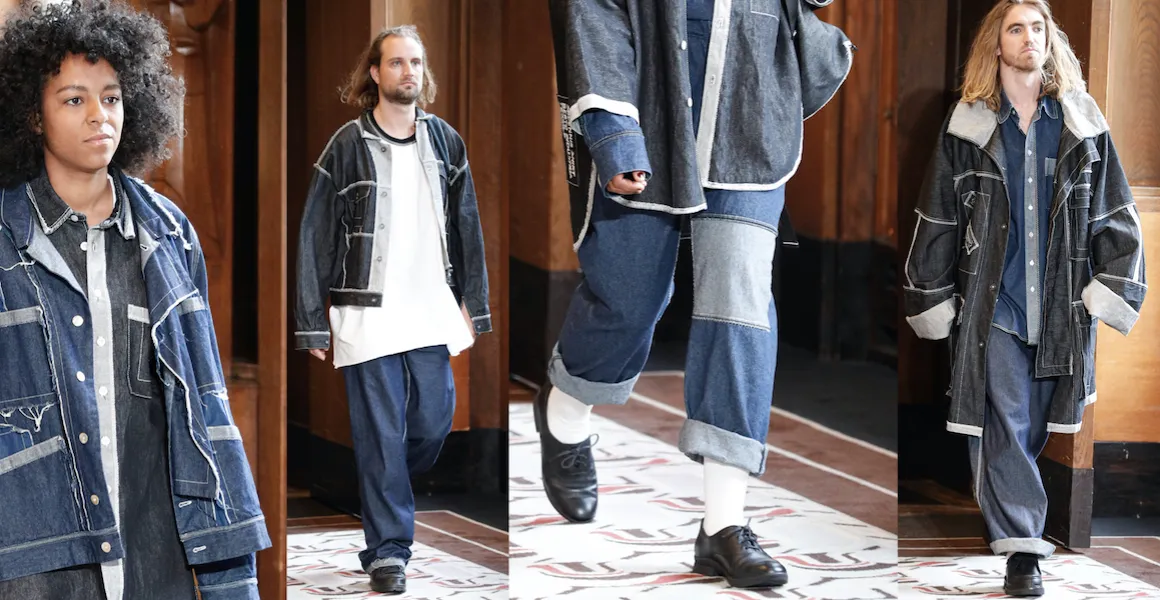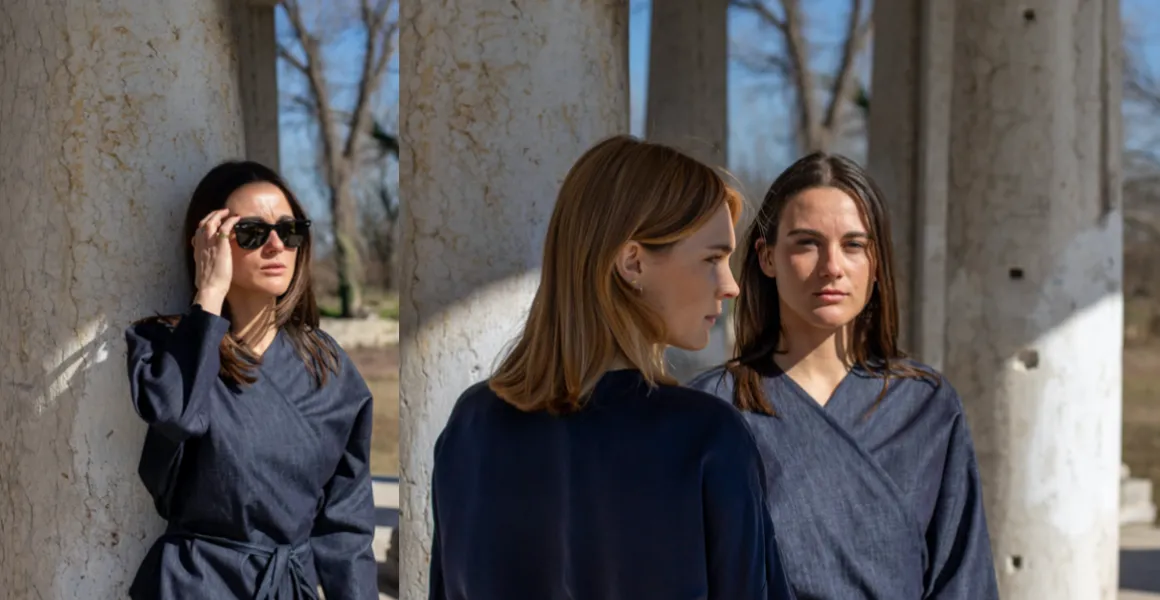What was your first project?
As our first project, we like to think of our first project together, our first collection, SS16, presented during spring 2015 at Pitti Immagine, in a space reserved for the first time for genderless fashion. For us it was a unique experience that contributed decisively to making us known and to “introducing ourselves.” This first work constitutes the initial piece of a study and research in continuous development on our concept of non-gender.
The creative process: do you work instinctively or plan every single small step? Where do your ideas come from?
We like to plan every single aspect of our work; our studio is covered with lists and calendars. It’s fundamental for us to have mental order and a roadmap, especially when we work on multiple projects with different timelines. Ideas, however, often come by chance, precisely when we’re not directly searching for them, perhaps while watching a movie, going to a supplier, or at a restaurant. We let ourselves be influenced by the most diverse stimuli, which can arrive at any moment. For this reason too, we need to be supported by very rationalized but simultaneously flexible planning.
How did your collaboration with Berto begin?
For us, the collaboration with Berto was a real challenge; in our journey we had never used denim before, as it’s a material we didn’t feel particularly connected to. But we are also open to what is unusual for us. For example, at the beginning of our journey, one aspect we were uncertain about was the possible creation of a capsule collection of printed t-shirts, because the world of prints doesn’t fully represent us. However, later the collaboration with the illustrator who currently handles this part of the collections was born; we found a common language together and we liked the result, so we continued. We can say that with Berto it went the same way; having the experience with prints behind us, we decided to also undertake the denim challenge.
Which Berto fabrics have you used for your project and collection?
The first one we used was Dynasty blue dry, which represented classic denim for us. Then we used First, chosen for its stiffness and uniform color, which was then enriched with contrasting embroidered polka dots, and lastly Kontessa, which is a denim that thanks to new technologies doesn’t stain even though it’s not washed.
What is the most significant part of this project in your opinion? What were you able to achieve thanks to this program?
First, the fact that the program guarantees the possibility of ordering materials without having to meet minimum order requirements, and second, the direct relationship with the company that also provides us with a tutoring service related to the denim world and therefore constant consultation that follows the entire project development.
“Less but better” can be read as the approval of a certain degree of purity in design but also in fashion design. It can also be understood as an environmental message about reduction and sustainability. What do you think about it?
Absolutely yes, our brand is gradually moving toward an idea of sustainable fashion. It’s a topic that is very close to our hearts, but it’s not easy for economic reasons, as the finished product has higher costs and therefore awareness of the end user is also necessary, and likewise in terms of support from companies. In fact, this was one of the aspects for which we decided to join Berto’s project.
Is there something you would like to do that you haven’t done yet?
Yes, go on vacation. 🙂
